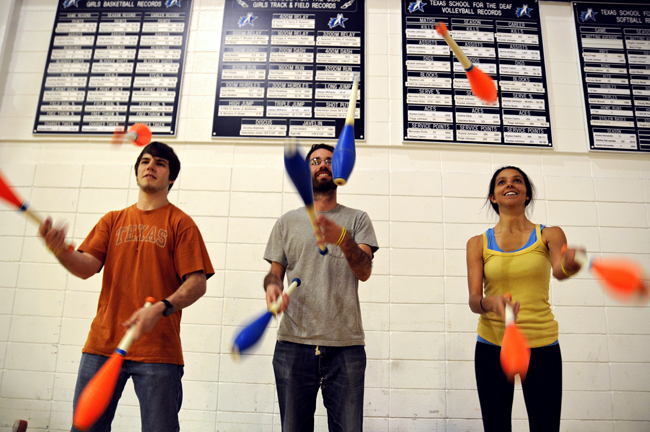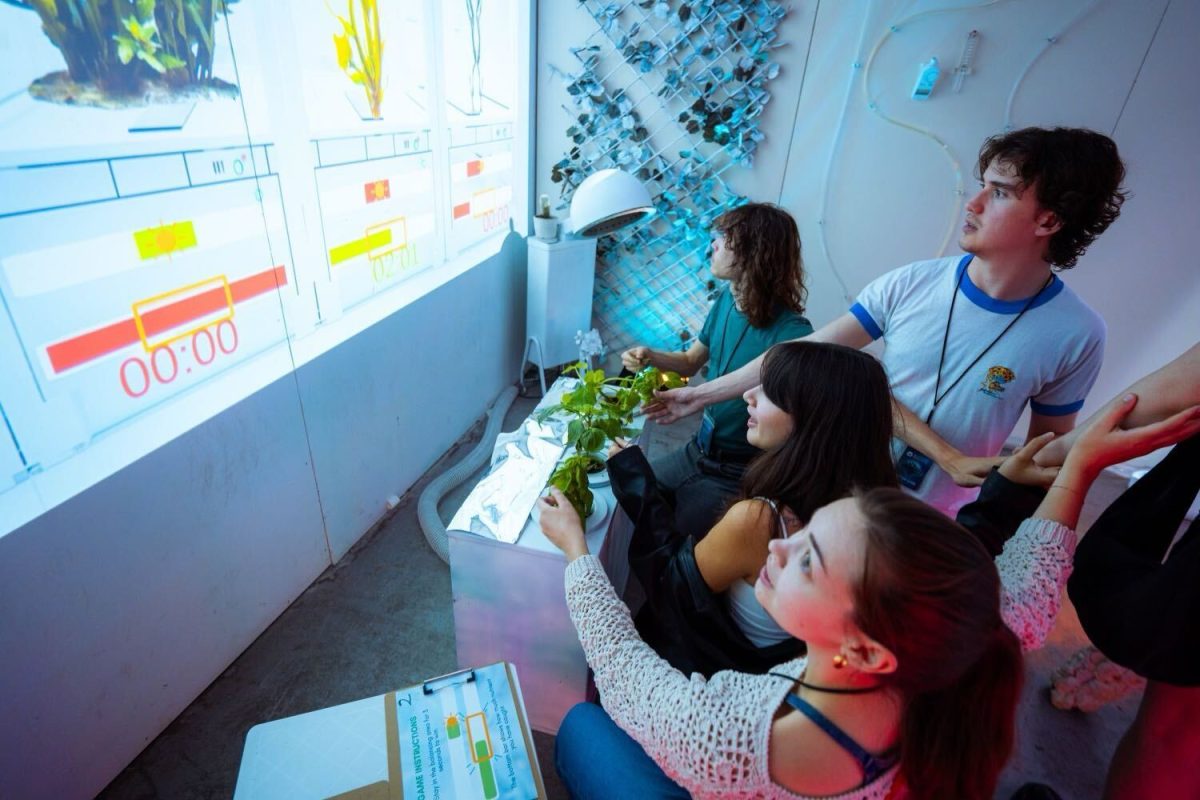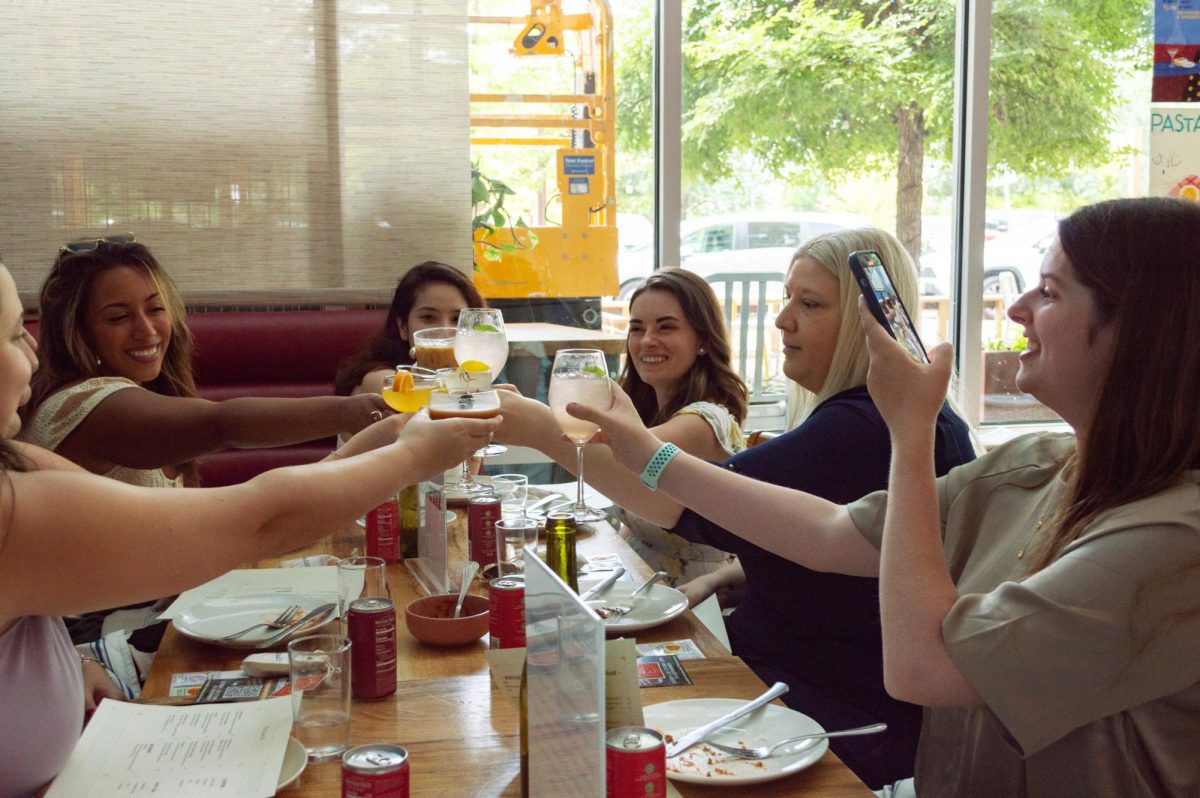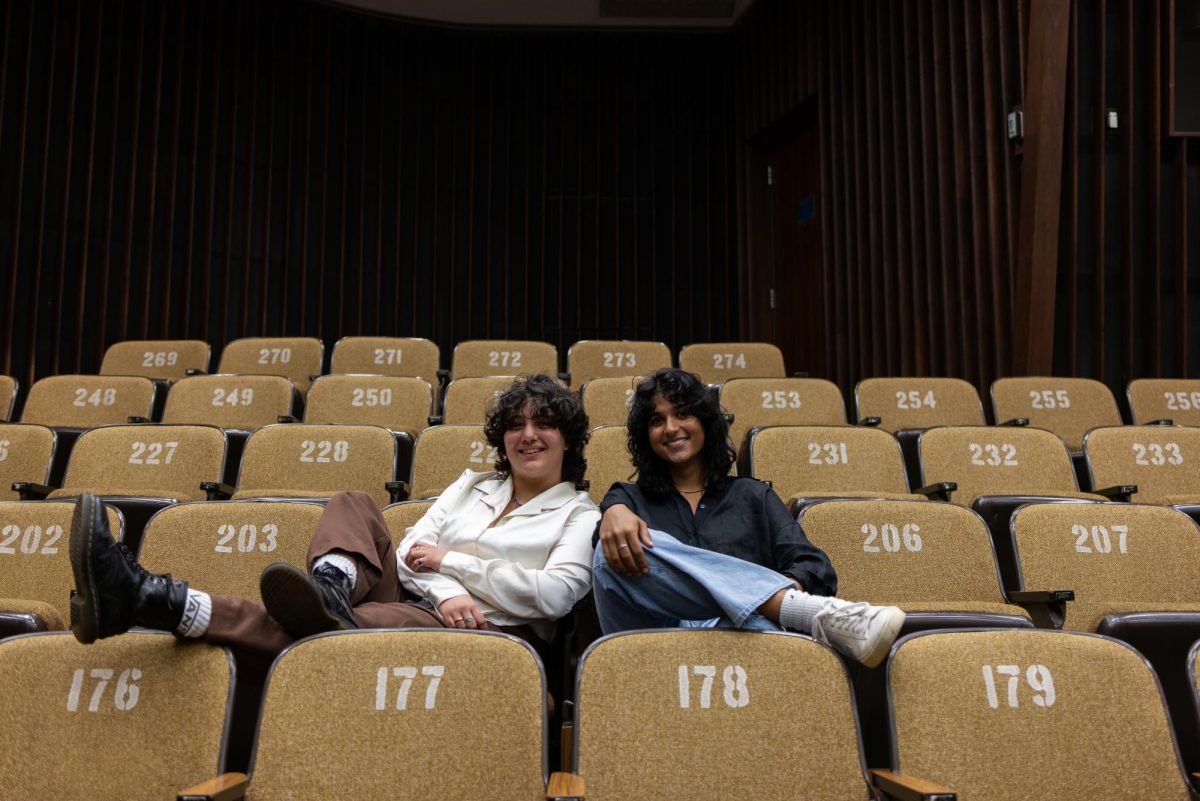Tossing clubs in the air and catching them in a rhythmic manner may not seem artistic, but the students of the Texas Juggling Society at UT beg to differ.
A sport that is both mentally stimulating and artistically fulfilling, the club members said juggling has interested them in a way that other forms of expression have not.
“It interests me because first of all, it’s fun to watch — even when you’re behind the balls,” society president Cole Ryberg said. “There’s a lot of personal development involved. It truly is a discipline.”
As a sport that engages the mind as much as the body, the club members said juggling has improved their quality of life in other areas as well.
“I love everything about juggling,” student ambassador Jacob Kovar said. “I love how it’s a really cool skill to have. It improves hand-eye coordination, but it also has good benefits to your brain. I remember things quicker than I used to because of juggling.”
Jim Maxwell, the adviser of the Texas Juggling Society, said he has seen the differences juggling makes in a person’s life. Learning to juggle may improve hand-eye coordination, but it serves to stimulate cognition as well.
“There was a study that showed that learning to juggle generates brain tissue,” Maxwell said. “When you first learn, it creates new pathways for neurons. Juggling can sharpen your focus and more importantly, it allows you to learn the art of multi-tasking. It improves your higher cognitive functions.”
In an ABC News article, “Can Juggling Improve Your Brain?,” Edna Sun wrote that juggling has been scientifically proven to increase brain activity.
“The study found that volunteers who did not train to juggle showed no difference in their brain scans over the three-month period,” Sun wrote. “However, those who now acquired the skill demonstrated an increase in gray matter in two areas of the brain involved in visual and motor activity, the mid-temporal area and the posterior intraparietal sulcus.”
According to Ryberg, the mental strain of juggling also has to do with the particular items being juggled. Ryberg said some props evoke more cognition, while others evoke less.
“There are balls, rings, clubs, and then sometimes you can combine them and have a multi-prop juggling,” Ryberg said. “It’s a thought exercise — an interactive puzzle in front of you.”
An important skill learned from juggling is the ability to pay close attention to each prop thrown in the air. Maxwell said this skill, while necessary to become a talented juggler, can sometimes backfire.
Maxwell flexed his hand, touching a scar as he spoke about the memory of where it came from, and about how juggling can sometimes be dangerous.
“It was a real butcher’s knife that was falling off the counter, and my juggling reflexes kicked in and I grabbed the knife,” Maxwell said. “Juggling can sometimes represent controlled chaos.”
Not many people know about the intense way juggling can effect a person’s mind, but Kovar said not many people know much about juggling, period.
“In most societies, no one juggles,” Kovar said. “Everyone draws or does other creative things. So for me, juggling was out of the box. Something people didn’t normally do. I’m more of a logical person and society says logical people tend to lack creativity, but juggling is logic and creativity combined. That’s what draws me in to juggling; the beautifully artistic way logic presents itself.”
Because of the social stigmas and misconceptions about juggling as an art and as a sport, the club members strive to change society’s perspective.
“People see us and think, ‘Oh they’re just juggling,’” Kovar said. “But when someone’s dancing, people think, ‘Oh that’s beautiful!’ People don’t take juggling seriously. Some jugglers do dance, choreography and juggling all at the same time.”
Maxwell joins in this attempt to educate society about the truth of juggling and about the Juggling Society and what they do.
“This group started in the late ‘70s,” Maxwell said. “My my goal is keep this group going, and to keep juggling relevant on campus. To make it so that students who are interested in it can seek it out and benefit from it. Our club is completely open. Anytime, anyone. No restrictions.”





















